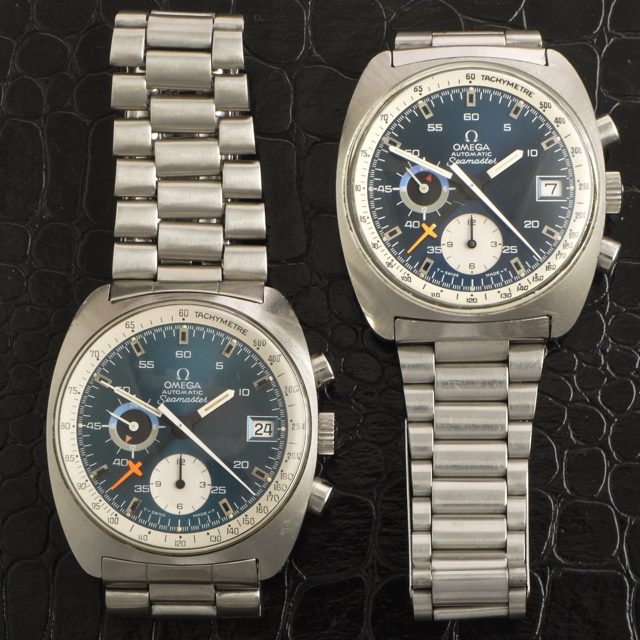
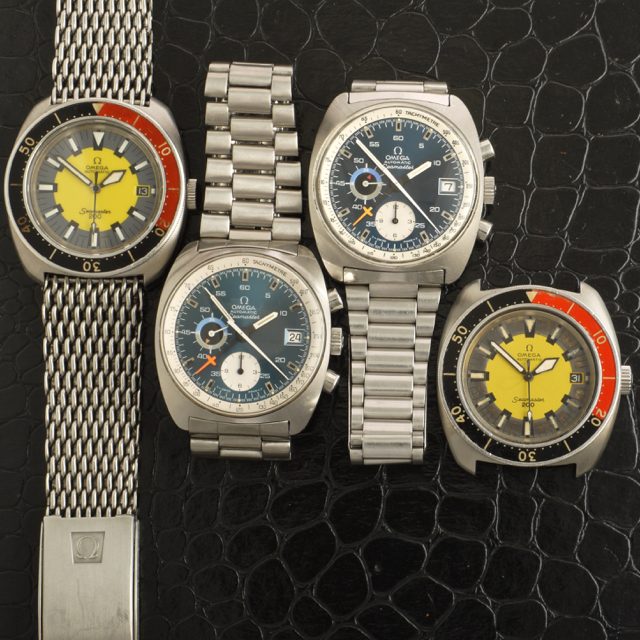
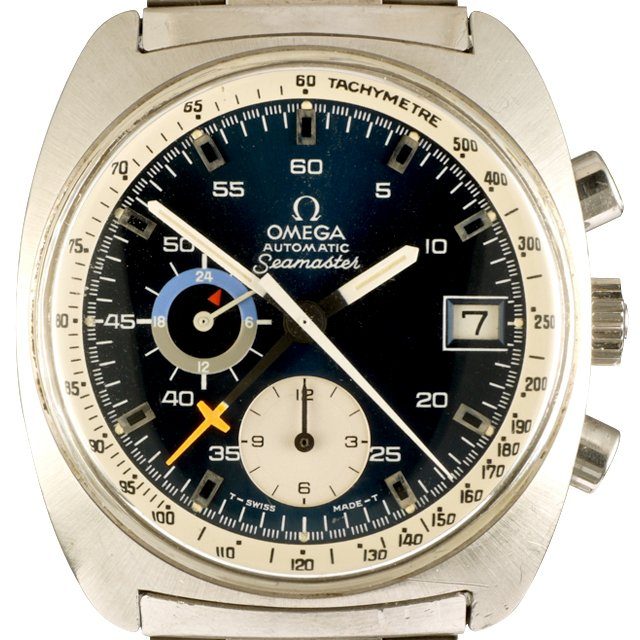
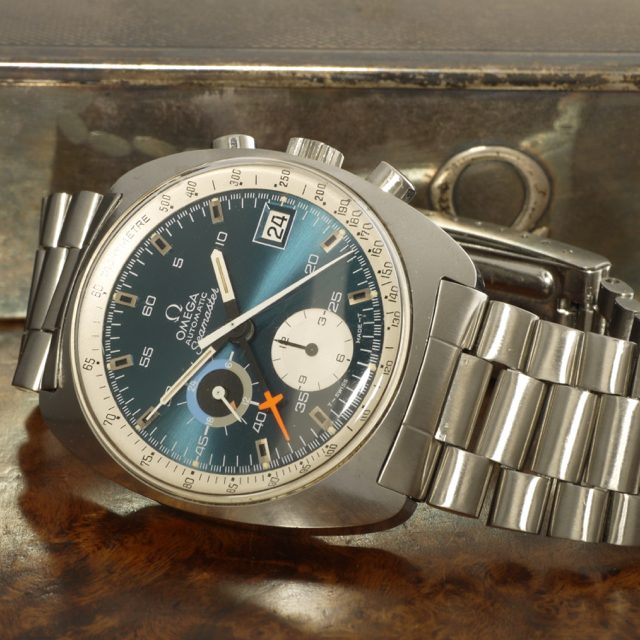
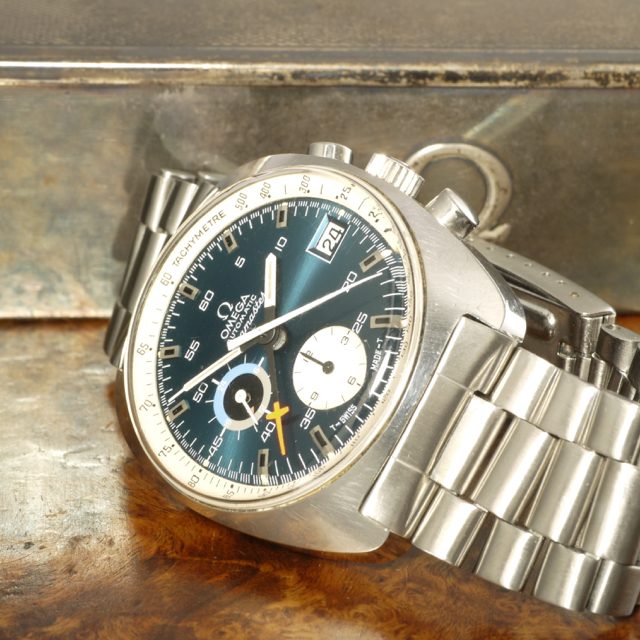
Omega Seamaster Chrono
The compact disk is developed by RCA1972 Omega Seamaster Chrono Automatic ref. 176.0007 cal. 1040.
Plexiglass double domed crystal and barrel-shaped steel case. Cal. 1040 with large center chronograph seconds and minutes hands. 12 hour counter at 6 o’clock, continues small seconds hand, 24-hour indicator at 9 o’clock and date. Made in 5 dial/cases configuration:
- blue dial + white tachymeter and white 12-hour sub-dial
- blue dial + white tachymeter and gray 12-hour sub-dial
- blue dial + white tachymeter and black 12-hour sub-dial
- gold case and dial
- silver dial
The cal. 1040 is the first Omega automatic Chronograph caliber. It was developed by Raoul-Henri Erad and produced by Lemania; it is worth mentioning that its rotor is mounted in a ball-bearings.
Although an early automatic chronograph, the caliber 1040 was not the first automatic chronograph in the world: it was preceded by the Chrono-Matic and the el Primero which were the first commercial automatic Chrono calibers.
Albert Piguet, Lemania’s chronograph specialist, had already made an automatic Chronograph prototype in 46. Unfortunately, this revolutionary project was shelved at the time by Paul-Emile Brandt, who considered it superfluous.
The Seamaster’s first diving-record was achieved in 1955, when diver Gordon McLean reached a depth of 62.5 meters in Australia.
The key to these watches was the O-ring rubber gasket. At this time, water-resistant watches generally used lead or shellac gaskets which were susceptible to temperature changes. The engineers at OMEGA were so sure of the Seamaster that one flew the Polar Route over the North Atlantic attached to the outside of a Douglas DC6 aircraft in 1956.
I consider the Seamaster two lines in one: the big, heavy Professional, designed for divers for deep diving, and a dress range also made by Seamaster.
Omega was founded in 1848 by Louis Brandt at the age of 23. The brands reputation grew fast and in 1895 the watches achieved a precision of 30 seconds a day.
By the turn of the 19th century Omega was one of Switzerland’s largest watch companies with 240,000 watches produced annually and employing 800 people.
Omega made its debut in sports during the Gordon Bennett international ballooning Cup in 1917; since then Omega has gone on to be the official timekeeper at 21 Olympic Games.
In 1936 Omega set the remarkable World precision record of 97.8 points at the Kew-Teddington observatory in England.
In 1957, with motorsport in mind, Omega launched the Speedmaster, which in 1965 was chosen by NASA as its official chronometer in Space. Four years later the Moonwatch was the first watch to be worn on the Moon, when on 21st July 1969 Neil Armstrong made his giant leap for mankind. Currently Omega belongs to the Swatch Group.
